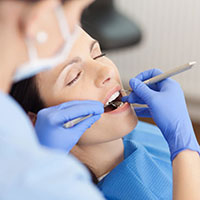
Dentist Robina entails the removal of plaque and tartar from your teeth. This is essential to prevent gum disease and tooth decay.
Brushing and flossing at home won’t be able to remove all of this residue that’s left behind, so it’s important to visit your dentist regularly for professional cleanings.
Plaque Removal
Plaque is a sticky, colorless film that forms on your teeth as a result of bacteria in your mouth and acid from food. It should be removed through regular tooth brushing and flossing.
When plaque isn’t removed regularly, it can harden into tartar or calculus. This hardened form of plaque is more difficult to remove and requires the help of a dentist.
The dental hygienist uses specialized tools during your cleaning to get rid of tartar and plaque buildup. These tools include a dental scaler and curette. They can also use a special tool called an ultrasonic tooth cleaner to clean hard-to-reach areas.
Scaling and Root Planing
Scaling and root planing, also called deep cleaning or periodontal therapy, is an in-depth procedure designed to fight gum disease (periodontal disease) by removing plaque and tartar from both the tooth surface and below the gum line. This prevents the development of periodontal disease and other complications like loose teeth, bad breath, and more.
The scaling process removes the pesky bacterial plaque and tartar that can build up on teeth. It also helps reduce inflammation and decrease the chances of infection by eliminating pockets of bacteria in your gums.
Next, the hygienist will perform root planing. This involves removing plaque and tartar from the tooth roots, smoothing them out, and making sure your gums reattach more firmly to your teeth.
During this procedure, the hygienist uses hand instruments or an ultrasonic scaler to remove bacteria and calculus from your tooth surfaces. They may also use a dental laser to provide bacterial decontamination, collagen repair, and regeneration.
Flouride Treatment
Fluoride is a natural mineral that can strengthen your teeth’s enamel and help prevent cavities. It is found in water and foods for a systemic benefit, but can also be applied topically through toothpastes and mouth rinses.
Dentists can apply professional fluoride treatments to patients at their dental offices, and they are an important part of routine dental cleaning entails. This treatment helps prevent decay and strengthens the teeth of children, adults and seniors.
It is also beneficial after restorative procedures such as getting a crown or bridge or getting gum recession or orthodontic treatment. It also helps patients who are prone to tooth sensitivity.
During the appointment, a dentist will apply a fluoride gel or varnish with a tray, brush or swab to strengthen teeth. It is a safe and painless procedure that only takes about 30 minutes.
Periodontal Examination
When you go for your dental cleaning, your dentist or hygienist will measure the depth of your gum pockets. This is called periodontal charting and can be an important part of your exam.
Your dentist or hygienist will insert a probe (small, thin metal instrument) into your gums and call out numbers, each number indicating how deep your pockets are. These measurements are critical to checking the overall health of your gums and identifying early signs of gum disease.
A deeper pocket indicates more detachment from your teeth and an increased risk of developing gum disease, which can cause inflammation and eventually weaken the gums, jawbone and even your teeth.
A gum examination should be part of every new patient exam and regular dental check-up. It is vital to diagnosing and treating gum diseases like gingivitis and periodontitis before they develop into severe problems. These examinations can also reveal receding gums, exposed roots and other issues that can lead to serious oral health problems.